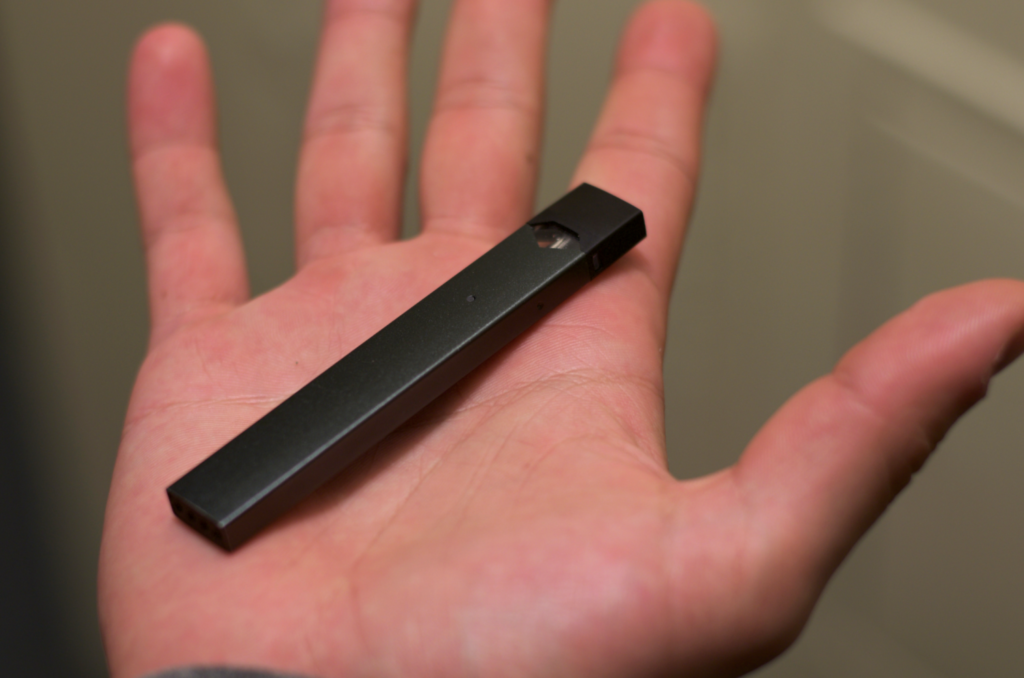Do you know that electronic cigarettes (e-cigarettes) are now the most commonly used tobacco product among U.S. youth? In 2016, more than two million U.S. middle and high school students used e-cigarettes over a 30-day period.
E-cigarettes (or “e-cigs,” “e-hookahs,” “mods,” “vape pens,” “vapes,” “tank systems,” “electronic nicotine delivery systems”) are battery-powered devices that can deliver nicotine and flavorings to the user in the form of an aerosol. Some are made to look like regular cigarettes, cigars, or pipes. Some resemble pens, USB sticks, and other everyday items. They can also deliver marijuana and other drugs.
In the U.S., youth are more likely than adults to use e-cigarettes, and among users aged 18-24, 40 percent have never been cigarette smokers compared to 11.4 percent of adults who had never been regular cigarette smokers. From 2011-2015, the number of youths juuling (an increasingly popular e-cigarette device that is shaped like a USB flash drive) increased 1,000 percent.

Claudine Emerson, Gorham High School’s social worker, said during a recent parent and educator presentation on vaping and juuling that “juuling set out to help a public heath problem but in a lot of ways it’s created a new one. People who may never have smoked are trying it.”
And with over 7,000 different flavor pods and hundreds of wraps or “skins” that look like zip drives or USB plugs it’s no wonder teens are attracted to them. Juuls were created initially to benefit adult smokers who wanted a substitute for regular cigarettes and other smoked tobacco products. They are not safe for youth, young adults, pregnant women, or adults who do not currently use tobacco products.
What many youths do not know is that 99 percent of devices tested have had nicotine in it, even the ones marketed to contain zero percent. One Juul pod (a nicotine liquid refill) is equivalent to 200 puffs, which is more than one pack of cigarettes.
The biggest health risk in teens is that the adolescent brain is not fully developed until age 25. Young people who use e-cigarettes may be more likely to go on to use regular cigarettes. There has also been reports of knock off devices exploding and causing fires and inflicting injury, and even death in one known case.
E-cigarette aerosol generally contains fewer toxic chemicals than the deadly mix of 7,000 chemicals in smoke from regular cigarettes.
However, e-cigarette aerosol is not harmless. It can contain harmful and potentially harmful substances, including nicotine, heavy metals like lead, volatile organic compounds, and cancer-causing agents.
Four out of five kids start with “just the flavoring” but those have risk. The metals in a vaping coil break down and the child is inhaling metals known to cause cancer. And because students think it’s “just flavoring” they are smoking more frequently because they don’t understand the risks; they are inhaling a lot more and the vapor is at such an extreme heat it is causing a condition known as “popcorn lung” (i.e. small burn marks on the lungs).
In 2017, the Maine Integrated Youth Health Survey data showed that out of those students who reported vaping in the past 30 days, 57 percent also used cigarettes and 49 percent used marijuana.
Emerson stated that five years ago educators felt that they had really kicked smoking in teenagers as they understood the risks and weren’t starting to smoke. “However, now we feel that we have come full circle and need to start educating teenagers again,” she shared.
Even though Maine laws changed in July and the law now states that a person has to be 21 to purchase and possess these items, Emerson feels the law hasn’t really deterred anyone from buying them. Tobacco companies are advertising these products on Instagram, Snapchat, and YouTube.
At GHS, administration has started a new discipline program if a student is caught with an e-cigarette at school. Initially, students were sent home but they found that to be ineffective. Now if caught, students will serve a Friday detention until 5:30 p.m. and have to take a 1:1 one-hour session with Emerson on a vaping curriculum.
At GMS, students have a one day out-of-school suspension and have to meet with social worker Brooke Proulx upon their return to school. The second offense is a one to eight day out-of-school suspension.
Emerson suggested using “The 3 T’s” when parents are talking to their kids about vaping/juuling: tone, timing, and tact. It’s not what you say, it’s how you say it (be aware of your tone of voice, facial expressions, and overall body language). Have a conversation in the car, while watching TV, or when something comes up in the news. Take a curiosity mindset instead of making assumptions or judgments; listen and try to avoid interrupting.


